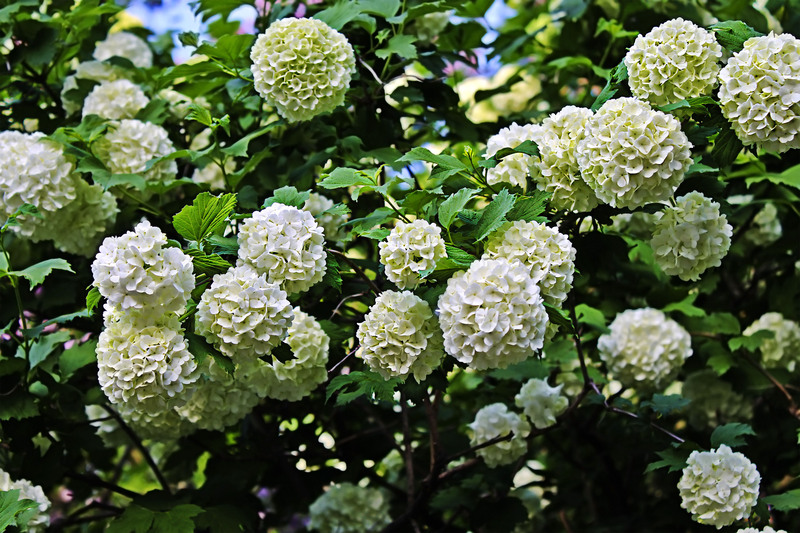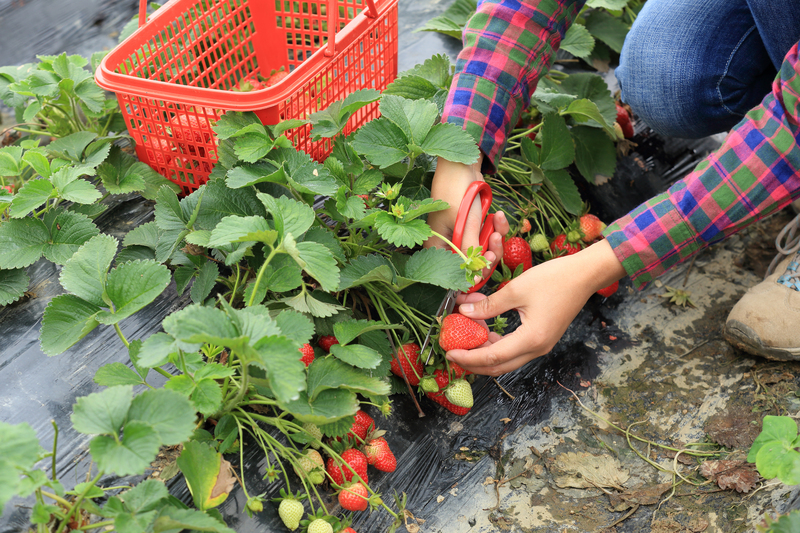Explore Tropical Plants That Will Thrive In Your UK Garden
Are you dreaming of a lush, exotic retreat right in your own backyard? Contrary to popular belief, you don't need to live in a tropical climate to enjoy the dramatic foliage, vibrant blossoms, and architectural shapes of tropical plants. Thanks to milder winters and clever garden design, many gardeners across the United Kingdom are now embracing tropical-style gardens with fantastic results. In this comprehensive guide, we'll show you exactly which tropical plants will thrive in your UK garden, share practical tips for care and protection, and inspire you to bring a touch of paradise to your outdoor space.

Why Choose Tropical Plants for a UK Garden?
Tropical plants add a sense of drama, colour, and vibrancy that's hard to achieve with traditional British flora alone. Their bold leaves, unusual textures, and flamboyant blooms deliver instant impact--making them a favourite for gardeners seeking a wow factor.
- Climate Change Advantage: With UK winters becoming milder, more ‘tropicals’ now survive outdoors for longer periods.
- Tropical Garden Designs: These plants create a holiday atmosphere and can be used for privacy, windbreaks, or focal points.
- Wildlife Friendly: Many exotics provide nectar and shelter for UK pollinators.
Curious about which tropical species will thrive in your British garden? Let’s explore the hardiest options, their unique requirements, and how to create your own tropical oasis!
Best Tropical Plants for UK Gardens
When selecting tropical plants suitable for the UK climate, it's crucial to choose varieties that can cope with cooler temperatures and sometimes wet winters. Here are top choices, each offering exotic appeal and resilience:
1. Hardy Banana (Musa basjoo)
- Description: Known as the Japanese banana, Musa basjoo boasts huge, lush leaves and forms dramatic clumps.
- Height & Spread: Can reach up to 4m tall in sheltered spots.
- Care Tips: Protect roots with mulch in winter and wrap stems in fleece or hessian in colder regions.
- Why Choose? Iconic tropical look, rapid growth, surprisingly hardy down to -10°C with protection!
2. Trachycarpus Fortunei (Chusan Palm)
- Description: The ultimate hardy palm tree for UK gardens. Palmate leaves and upright trunk.
- Height & Spread: Up to 12m tall, very slow growing.
- Care Tips: Thrives in sun or partial shade, tolerates most soils but appreciates shelter from strong winds.
- Why Choose? Withstands snow and frost, providing year-round tropical structure.
3. Tree Fern (Dicksonia antarctica)
- Description: An ancient species with feather-like fronds unfurling from a rough, trunk-like stem.
- Height & Spread: Grows slowly to 4m in 20+ years.
- Care Tips: Needs consistent moisture and shade. Protect crown in winter with straw or fleece.
- Why Choose? Perfect for adding dramatic height and a primeval jungle vibe to UK gardens.
4. Hedychium (Ginger Lily)
- Description: Large, lush leaves topped by fragrant, colourful flower spikes late in summer.
- Height & Spread: 1-2m tall, clump-forming.
- Care Tips: Plant in moist, well-drained soil in full sun. Mulch heavily in winter.
- Why Choose? Striking blooms and lush foliage, great for borders or containers.
5. Canna Lily (Canna indica & Hybrids)
- Description: Banana-like leaves with dazzling red, orange, or yellow flowers from midsummer to autumn.
- Height & Spread: 1.2-2m, depending on variety.
- Care Tips: Grow in sun, feed regularly. Lift tubers to store frost-free or mulch well in warmer areas.
- Why Choose? Adds intense colour and tropical luxury. Excellent for pondsides and beds.
6. Cordyline australis (Cabbage Palm)
- Description: Palmlike with spiky, sword-shaped leaves. Often seen in coastal UK towns.
- Height & Spread: 5-15m, forms a single or multi-stemmed trunk.
- Care Tips: Easy to grow, tolerates wind, salt and drought. 'Torbay Dazzler' offers variegated foliage.
- Why Choose? Low-maintenance, architectural and hardy to around -8°C.
7. Tetrapanax papyrifer (Rice Paper Plant)
- Description: Gigantic, palmate leaves up to 60cm wide. Creates a bold, jungle-like effect.
- Height & Spread: Up to 5m tall, fast-growing.
- Care Tips: Prefers light shade, protect from strong winds. Roots can spread vigorously.
- Why Choose? Stunning leaves give instant exotic impact even in cooler climates.
8. Fatsia japonica (Japanese Aralia)
- Description: Glossy, lobed leaves. Handles harsh weather and deep shade.
- Height & Spread: 1-4m, rounded bush.
- Care Tips: Thrives in shade, moist to well-drained soils. Hardy to -10°C.
- Why Choose? A must for shady gardens and bold container displays.
9. Melianthus major (Honey Bush)
- Description: Silver-blue, serrated leaves and bold, architectural shape with nectar-rich flowers.
- Height & Spread: 2-3m, sprawling habit.
- Care Tips: Prefers full sun and shelter. Cut down frost-damaged stems for fresh growth each year.
- Why Choose? Foliage texture and colour are unmatched in temperate gardens.
10. Eucomis (Pineapple Lily)
- Description: Low clumps of strappy leaves and eye-catching flower heads resembling pineapples.
- Height & Spread: 30-60cm high, excellent for pots.
- Care Tips: Plant bulbs in well-drained soil. Mulch or lift for winter in coldest areas.
- Why Choose? Adds tropical flair to borders and patio containers.
Essential Tips for Growing Exotic Plants in the UK
Achieving a thriving tropical garden in the UK is all about microclimates, protection, and smart plant combinations. Here are some invaluable tips for success:
- Shelter and Warmth: Plant against south or west-facing walls to benefit from radiated heat and protection from cold winds.
- Drainage: Many exotics despise waterlogging. Improve clay soils with compost and grit, or grow in raised beds.
- Winter Protection: Use thick mulch, horticultural fleece, or straw to protect roots and crowns during cold snaps.
- Containers: Grow tender exotics in pots for easy winter movement into greenhouses or conservatories.
- Layering: Combine tall palms and bananas with mid-level cannas and ferns, underplanted with shade-lovers for a jungle feel.
- Watering: Summer heat means most tropicals appreciate regular watering, especially during dry spells.
- Feeding: Exotic plants are hungry; feed every 2-3 weeks during the growing season with a balanced, organic fertiliser.
How to Design a Tropical-Style UK Garden
Design is key to creating a convincing and low-maintenance tropical oasis in your UK garden. Here’s how to achieve the look:
Use Bold Foliage as Structure
- Combine plants with large, contrasting leaves--like Tetrapanax, Bananas, and Tree Ferns--for a genuine jungle effect.
- Mix in fine-textured foliage, such as grasses or ferns, for a calming balance.
Punctuate with Colourful Flowers
- Add impact using brightly flowering Canna, Hedychium, or Eucomis.
- Incorporate annuals, like Salvia, Dahlia, or Begonia, for extra tropical bravado.
Create Layered Planting
- Arrange plants in layers, with tall palms and bananas at the back, followed by mid-height cannas and bold-leaved shrubs, then groundcover such as Hosta or Fatsia.
Add finishing touches
- Use boulders, pebble mulch, water features, or even quirky statues to enhance the exotic theme.
- Warm mood lighting can extend enjoyment into balmy summer evenings.
Pest, Disease, & Overwintering Advice
- Pests: Slugs, snails, and vine weevil can trouble young shoots--use organic controls or pick off by hand.
- Winter Wet: Soggy roots cause more fatalities than frost! Prioritise drainage and avoid planting in dips.
- Frost Protection: Wrap tender trunks/leaves of Musa, Tree Fern, and similar in fleece from November to April.
- Containers: Lift and move tender potted plants into a frost-free location from October onwards.

Frequently Asked Questions (FAQs)
Can I really grow tropical plants outdoors in the UK?
Absolutely! While some exotics need overwintering indoors, many--like Hardy Bananas, Tree Ferns, and Chusan Palms--can survive most UK winters outdoors with a little protection.
Which is the most low-maintenance tropical plant for a UK garden?
Fatsia japonica thrives with almost no care and tolerates deep shade, making it a perfect low-maintenance choice.
Do tropical plants need special soil?
Most appreciate rich, humus-laden soil with good drainage. For heavy clay, amend with organic matter and horticultural grit.
How can I protect exotics from cold?
Use thick mulch, horticultural fleece, or bubblewrap. For large specimens, wrap the trunk or crown, and for pots, move under shelter when possible.
Conclusion: Bring Paradise Home with Tropical Flair
If your garden has felt dull and predictable, introducing tropical plants that thrive in the UK offers a spectacular transformation. Even a handful of bold exotics can create a lush outdoor hideaway--perfect for summer BBQs, evening relaxation, and when you need a holiday vibe close to home. Remember:
- Choose reliably hardy varieties for best year-round impact.
- Use containers and protection to experiment with more tender species.
- Think about plant structure, flower colour, and dramatic foliage for authentic tropical style.
Whether you have a large garden or just a patio, it’s never been easier to enjoy the beauty of the tropics--right here in the United Kingdom.
Ready to explore tropical plants for your UK garden? Visit local nurseries, specialist growers, or online plant shops and start building your exotic paradise today!